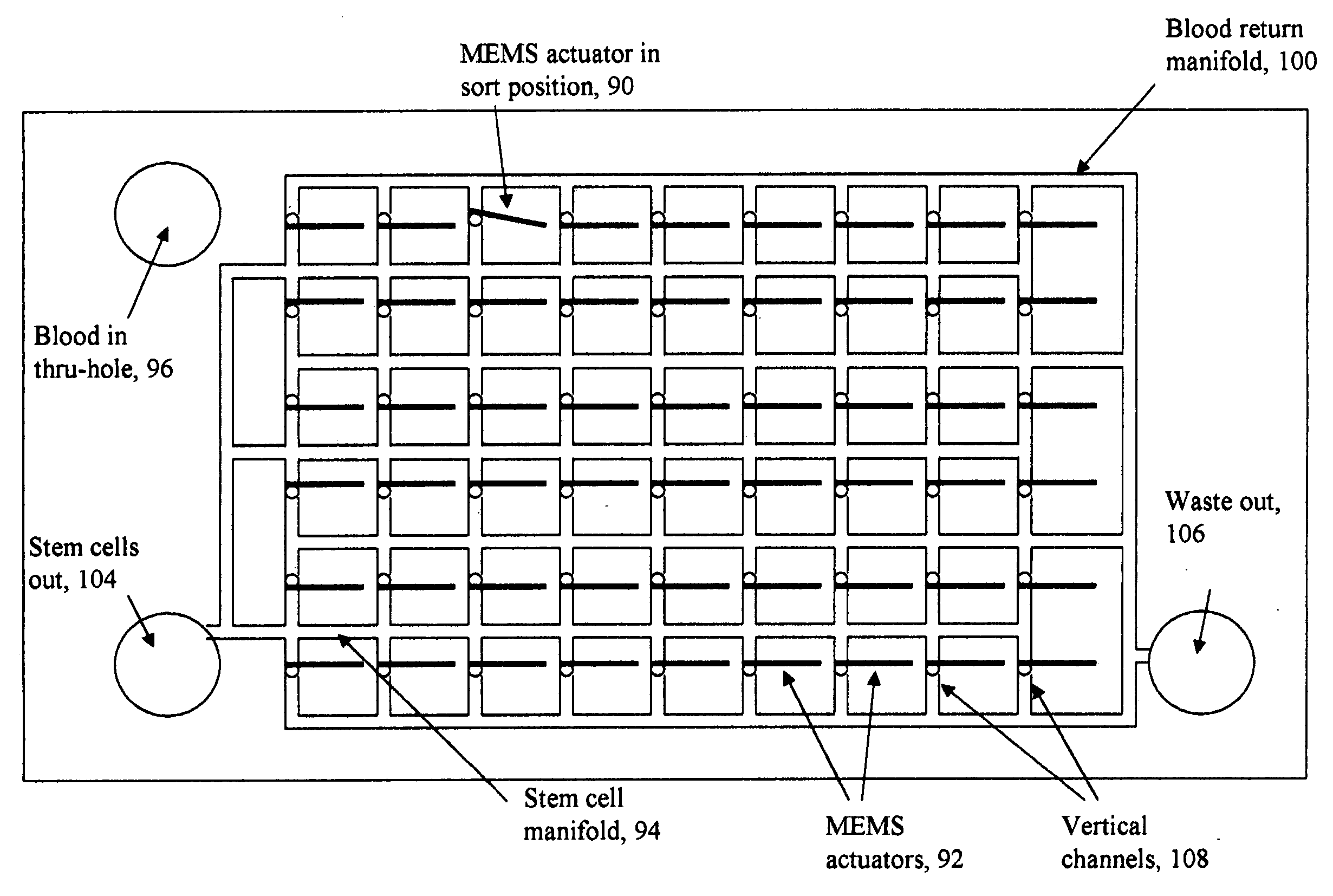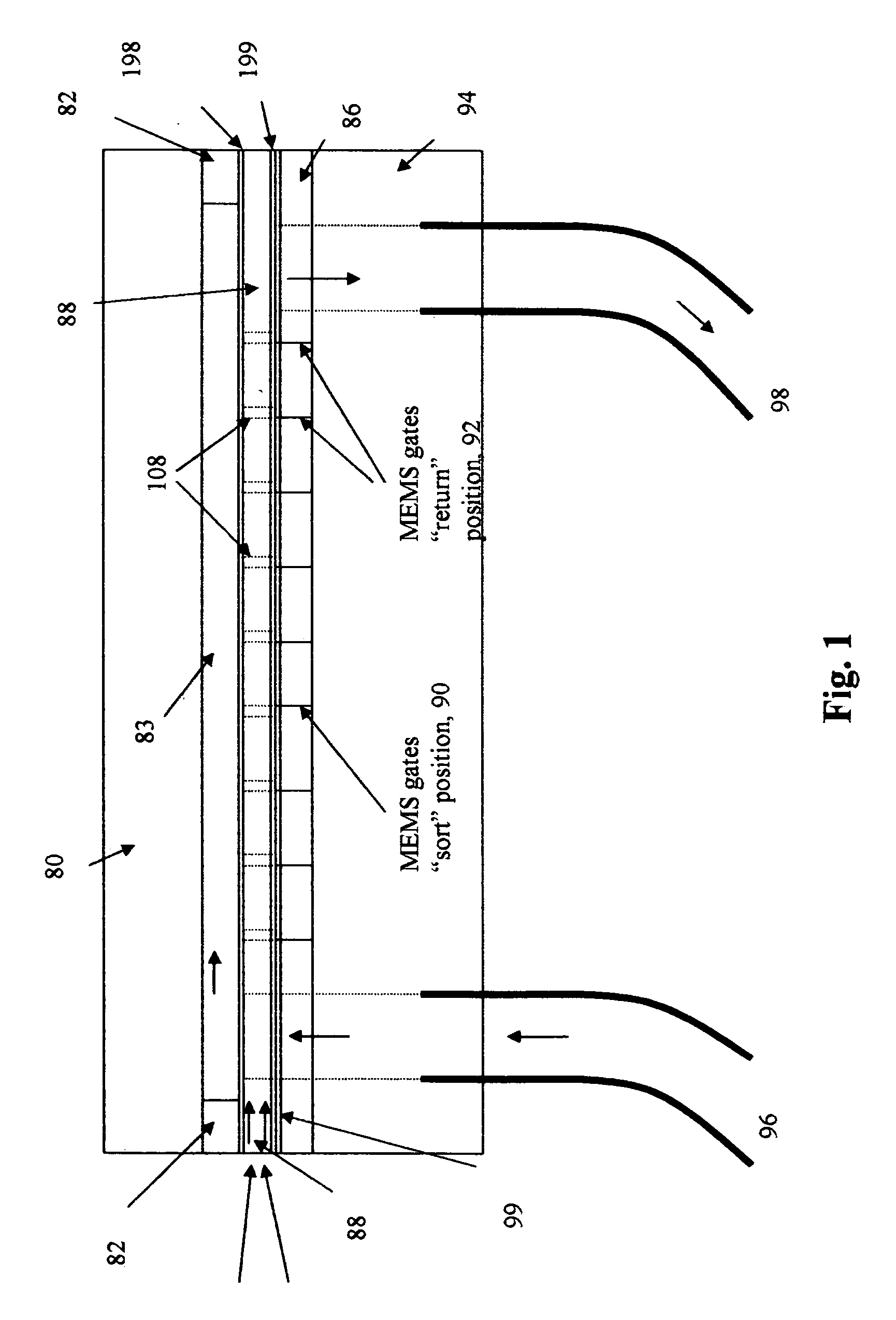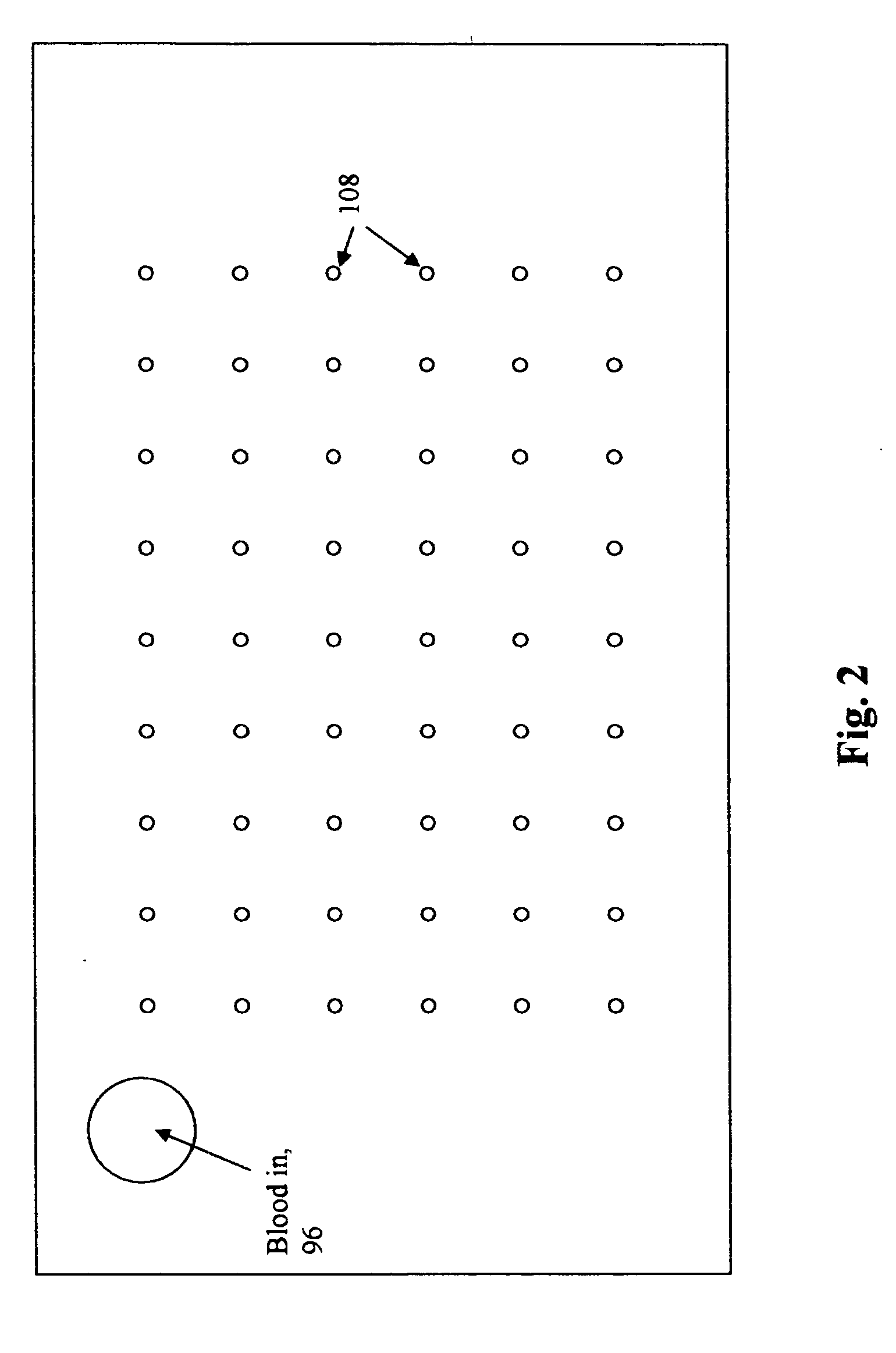Method and apparatus for sorting biological cells with a MEMS device
a biological cell and mems technology, applied in the field of biological cell sorting, can solve the problems of destroying the ability to regenerate the vital components of the blood and immune system, unable to cope with chemotherapy, and often suffered by patients, etc., and achieves the effects of low cost, high throughput, and low manufacturing cos
- Summary
- Abstract
- Description
- Claims
- Application Information
AI Technical Summary
Benefits of technology
Problems solved by technology
Method used
Image
Examples
Embodiment Construction
[0019] The MEMS device is an array of 1024 vertical inlet channels fabricated in a wafer, wherein the 25 um diameter of each channel is just large enough to admit the passage of a hematopoietic stem cell. (Hematopoietc stem cells are typically between and 10 um in diameter.) At the exit from each vertical channel is an independent valve / actuator. The actuator directs the cells individually into one of two of different possible pathways, which are microfluidic channels etched into the wafer, beneath the vertical inlet channels. The situation is shown schematically in FIG. 1. The figure shows the application of the device to the separation of the components of human blood, in this case the separation of hematopoietic stem cells (HSCs) from a fluid mixture of other cells. The actuator separates the sample stream into one of two manifolds, depending on the detection of a laser-induced fluorescence signal or multiple signals, depending on the fluorescent markers used. The presence of flu...
PUM
| Property | Measurement | Unit |
|---|---|---|
| diameter | aaaaa | aaaaa |
| diameter | aaaaa | aaaaa |
| thickness | aaaaa | aaaaa |
Abstract
Description
Claims
Application Information
 Login to View More
Login to View More - R&D
- Intellectual Property
- Life Sciences
- Materials
- Tech Scout
- Unparalleled Data Quality
- Higher Quality Content
- 60% Fewer Hallucinations
Browse by: Latest US Patents, China's latest patents, Technical Efficacy Thesaurus, Application Domain, Technology Topic, Popular Technical Reports.
© 2025 PatSnap. All rights reserved.Legal|Privacy policy|Modern Slavery Act Transparency Statement|Sitemap|About US| Contact US: help@patsnap.com



